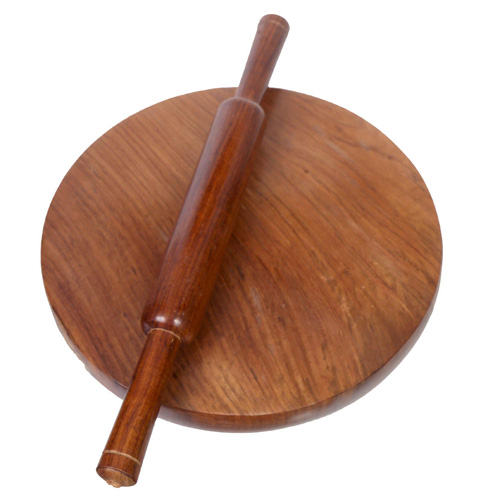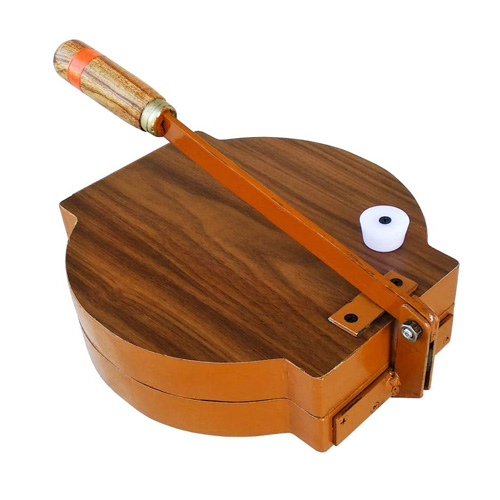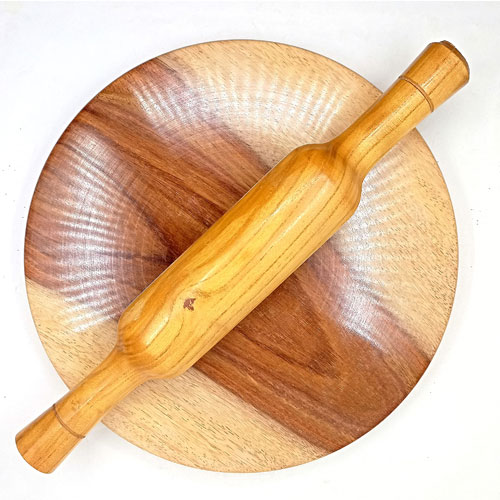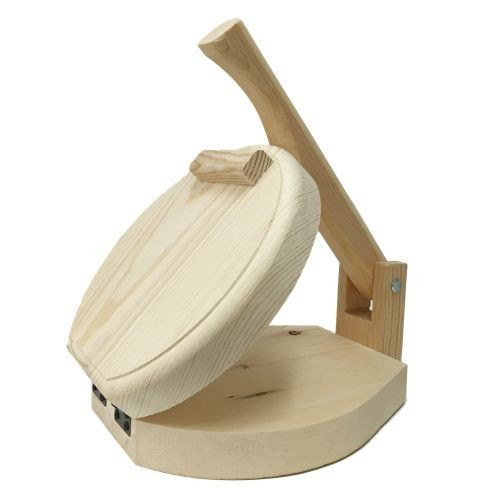Introduction
Are you tired of spending endless hours in the kitchen kneading and rolling out dough to make the perfect rotis? Look no further! Say hello to your kitchen’s new best friend—the wooden roti makers. This comprehensive guide will take you through everything you need to know about wooden roti makers, from their benefits and features to tips for choosing the right one. So sit back, relax, and let’s dive into the world of wooden roti makers!
Why Choose a Wooden Roti Maker ?

The Natural Charm of Wood

Wooden roti makers are often preferred over their metal counterparts due to their natural charm and aesthetic appeal. The warm tones and intricate grain patterns of wood add a touch of elegance to any kitchen. Not only do they serve a functional purpose, but they also enhance the overall visual appeal of your cooking space.
Health and Safety Benefits
Wooden roti makers have gained popularity among health-conscious individuals due to their natural and non-toxic properties. Unlike metal or plastic, wood does not leach harmful chemicals into your food during the cooking process. Additionally, wood has natural anti-bacterial properties, making it a safe and hygienic choice for your kitchen.
Features to Consider

Material and Durability

When choosing a wooden Roti Maker, it is essential to consider the type of wood used. Hardwoods like beech, maple, or oak are highly durable and resistant to warping, making them ideal for a long-lasting roti maker. Avoid softwoods like pine, as they may not withstand the pressure exerted during the roti-making process.
Size and Portability
Consider the size of your kitchen and storage space before purchasing a wooden roti maker. Opt for a compact and lightweight model if you have limited space, or choose a larger one if you frequently prepare rotis for a large family. Some roti makers also come with convenient foldable handles, making them easy to carry and store.
Non-stick Surface

Look for a wooden roti maker that has a non-stick surface to ensure easy release of the rotis without the need for excess oil or flour. A non-stick surface prevents the dough from sticking to the roti maker, resulting in perfectly cooked rotis every time.
Heat Resistance and Insulation
High-quality wooden roti makers should be able to withstand high temperatures without warping or cracking. Additionally, they should have good insulation properties to prevent heat transfer to the handles, reducing the risk of burns while handling.
How to Use a Wooden Roti Maker

Using a wooden roti maker is relatively simple, even for beginners. Follow these steps for perfectly round and evenly cooked rotis:
- Prepare the dough according to your preferred recipe. Make sure it is neither too dry nor too sticky.
- Heat the wooden roti maker on a medium-high flame for a few minutes. This helps in even heat distribution.
- Take a small portion of the dough and roll it into a ball. Flatten it slightly and dust it with flour to prevent sticking.
- Place the flattened dough ball in the center of the roti maker. Gently press the top handle to flatten it.
- Open the roti maker and carefully remove the flattened roti. If it does not come off easily, lightly dust it with flour and try again.
- Cook the roti on a preheated tawa or griddle, flipping it once or twice until it puffs up and gets golden brown spots.
- Repeat the process with the remaining dough to make more rotis.
Tips for Choosing and Caring for Your Wooden Roti Maker

Choose the Right Size
Consider the number of rotis you usually make in one go when selecting the size of your wooden roti maker. If you have a large family or frequently entertain guests, opt for a larger size to avoid making multiple batches.
Regular Oil Application
To maintain the quality and prevent the wood from drying out, it is essential to regularly apply oil to your wooden roti maker. Rub a small amount of food-grade oil onto the surface and let it sit for a few hours. Wipe away any excess oil before using.
Store Carefully
When not in use, store your wooden roti maker in a cool and dry place to prevent it from absorbing moisture. Avoid storing it near direct heat sources, as this can cause the wood to dry out and crack.
Clean with Care
Cleaning a wooden roti maker is simple. Wipe it clean with a soft, damp cloth after each use. Avoid using abrasive cleaning agents or soaking it in water, as this can damage the wood. Dry it thoroughly before storing it.
Conclusion
Wooden roti makers are a fantastic addition to any kitchen, bringing not only functionality but also elegance and charm. With their health and safety benefits, durability, and ease of use, they have quickly become a favorite among roti lovers. By choosing the right size, caring for your wooden roti maker, and following the correct usage techniques, you can enjoy delicious, perfectly round rotis with minimal effort. So why not make a wooden roti maker your kitchen’s new best friend today?
Whether you’re a seasoned chef or a beginner in the kitchen, incorporating a wooden roti maker will revolutionize your roti-making experience. Say goodbye to the hassle of rolling and kneading dough and say hello to perfectly cooked rotis every time. So why wait? Embrace the natural charm and functionality of a wooden roti maker and elevate your cooking game to new heights!
You May Also Like:
-
The Wooden Key Holder: Practical and Stylish Organization
-
Wooden Office Table: A Perfect Blend of Elegance and Functionality
-
Master the Art of Teak Wood Quality Checking: A Comprehensive Guide
-
The Wooden Spice Box: A Culinary Essential
-
Wooden Side Table Makeover: Simple Tricks for Refreshing Your Furniture
-
Wooden Photo Frame Design: Adding Elegance to Your Memories
FAQs for the Wooden Roti Maker:
Q1. What is a wooden roti maker, and how does it work?
A wooden roti maker is a traditional kitchen tool used to flatten and cook Indian flatbreads called “rotis.” It typically consists of a wooden base and a rolling pin. To use it, you place a ball of dough on the base, press it with the rolling pin, and then cook the flattened dough on a hot griddle or skillet.
Q2. Why would I choose a wooden roti maker over a modern one?
Wooden roti makers have been a staple in Indian kitchens for generations. They are known for their simplicity and reliability. Many people prefer them for the authentic touch they bring to the cooking process. Plus, they can be a nostalgic choice, reminding you of traditional family recipes.
Q3. Are there any advantages to using a wooden roti maker?
Absolutely! One advantage is that wooden roti makers are eco-friendly as they don’t require electricity. They are also affordable and easy to maintain. Moreover, they allow you to control the thickness of your rotis, making them perfectly tailored to your taste.
Q4. Can beginners use a wooden roti maker effectively?
Yes, beginners can definitely use a wooden roti maker. It might take a bit of practice to get the technique right, but it’s a fun skill to learn. Start with small batches, and you’ll soon be making rotis like a pro.
Q5. What types of wood are commonly used for wooden roti makers?
Wooden roti makers are often made from hardwoods like teak, Sheesham, or neem. These woods are durable and resistant to moisture, ensuring the tool lasts a long time.
Q6. How do I clean and maintain a wooden roti maker?
Cleaning is simple; just wipe it clean with a damp cloth after each use. Avoid immersing it in water to prevent warping. To maintain its smooth surface, you can occasionally rub it with a bit of vegetable oil.
Q7. Can I use a wooden roti maker for other flatbreads, like tortillas or naan?
While wooden roti makers are primarily designed for rotis, you can experiment with other flatbreads too. They can be used for tortillas and even certain types of naan. Just adjust the thickness and cooking time accordingly.
Q8. Are there any safety precautions I should keep in mind when using a wooden roti maker?
Safety is essential. Always be cautious when handling the hot griddle or skillet. Make sure the wooden base is placed on a stable surface to prevent accidents. Don’t forget to keep the wooden surface well-maintained to avoid any splinters.
Q9. Where can I purchase a wooden roti maker?
You can find wooden roti makers at most Indian kitchen supply stores or online marketplaces. Some may even be handcrafted, adding an extra touch of authenticity to your cooking experience.
Q10. Any tips for getting perfectly round rotis with a wooden roti maker?
Achieving perfectly round rotis can be a bit tricky, but practice makes perfect. Start with smaller portions of dough, and use gentle, even pressure when rolling. Over time, you’ll develop the knack for creating those beautiful, round rotis that everyone loves.












2 thoughts on “The Ultimate Guide to Wooden Roti Makers: Your Kitchen’s New Best Friend”